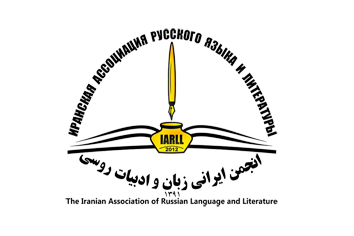ON THE LITERARY QUALITY OF “VOYAGE BEYOND THREE SEAS”
DOI:
https://doi.org/10.61186/IARLL.26.1Keywords:
“Walking across Three Seas”, Literary Paradigm, Philological Cryptology, Literary Hoax, Afanasy Nikitin, Nikolai Karamzin, Osip SenkovskyAbstract
The article examines the aspects and manifestations of the literature of Afanasy Nikitin's “Voyage beyond Three Seas”. Attention is drawn to some plot and semantic oddities (double narrative, commercial gaps, quality of information, linguistic means, text addressing, questions of faith, the fate of the author) that need an adequate explanation. The presence of literature in the text, where it is not provided for, determines two research strategies – cryptological and theoretical. In the first case, you should check the origin of the text, clarify the attribution of authorship. In the second case, the text of the “Voyage” appears as a material for a theoretical understanding of the nature of literary text generation. The cryptological approach captures the moments that can be reclassified from random to natural. The article argues that the ontological reason for the literariness of “Voyage beyond Three Seas” is a literary paradigm that acts transpersonally and determines the features of the emerging work. The traveler and author of travel notes Afanasy Nikitin, the historiographer Karamzin, the orientalist Senkovsky and many other famous and unknown personalities involved in the creative history and receptive tradition of one of the most significant and mysterious literary monuments of Russian culture deserve grateful and unbiased study.
Extended Abstract:
This article examines the aspects and manifestations of the literariness of Afanasy Nikitin's "Voyage across Three Seas." Attention is paid to certain plot and semantic strangenesses—a double narrative, commercial lacunae, the quality of information, linguistic means, addressation of the text, questions of faith, and the fate of the author—that require adequate explanation. The presence of literariness in a text where it is not provided for predetermines two research strategies: a cryptological and a theoretical one.
The cryptological approach seeks to verify the text's origin and clarify the attribution of authorship, reclassifying accidental moments into regular ones. The theoretical approach uses the text as material for comprehending the nature of literary text-generation. The article's thesis is that the ontological reason for this literariness is a literary paradigm that acts transpersonally and predetermines the features of the emerging work.
The central theme is literary paradigmatics, not philological conspiracyology. The main problem is the ontology of literariness and the expansion of philological knowledge. The methodology of cryptoanalysis is a natural cognitive reaction to coincidences and strangenesses in the circumstances of the manuscript's writing and discovery.
The Voyage is regarded as an example of immanent literariness in a non-artistic text. It remains to be seen whether this is conditioned by a generating context, an incorporated subtext, or another text-generation. Theory of literature and philological cryptology are equally necessary: one identifies the objective properties of literariness, the other helps specify the names of its subjectivity.
Why these travel notes are considered a literary monument? A preliminary answer is that the text stands out for features causing an artistic impression. Literariness is the aesthetic quality of verbal art, the presence of an additional, internal, world-forming perspective. It is an aesthetic potential encouraging realization. The initial absence of an aesthetic distance is compensated by historical retrospection. A perceived wholeness absorbs and aestheticizes the text's negligences and unpretentiousness.
The plot's duality is fundamental: a commercial trip transforms into a journey when the pragmatic goal is lost. The path acquires a goal in itself, and its description becomes potentially aesthetic. The hero's path contains spiritual trials of faith and identity. The image of the hero, combining "one's own" and "the other's," gains the universality of an archetype. The addressation of the text also exceeds the genre's goal-setting, potentially evolving from personal notes to a text for national reading, surpassing confessional regulations.
These strangenesses encourage literary reflection. The narrative is double, with two distinct positions. Commercial lacunae, like the unexplained means for a five-year journey, are striking. The quality of certain information, such as military statistics, is difficult to obtain firsthand, raising questions about sources and language acquisition. The author's death near Smolensk is ideal for a literary biography, providing closure and preserving an aura of heroism and mystery.
The publication history adds a cryptological dimension. The original is lost. It was discovered by Nikolai Karamzin—a writer, historiographer, and traveler who could appreciate its full significance. His authority is a strong argument, but the article explores the minimal probability of a literary mystification. It considers if a figure like the orientalist and famed mystifier Osip Senkovsky, who also used the name Yusuf during his travels, could have been involved, despite his young age at the time of publication. The academic stance is that this is impossible, while cryptology would term it improbable.
In conclusion, the signs of literariness in this text require a dual investigation. Theory of literature analyzes its objective properties, while philological cryptology examines the potential agents of its subjectivity. All figures involved in the creative history of this significant and mysterious monument deserve grateful and unbiased study.
References
1- Афанасий Никитин (1958). Хожение за три моря // Хожение за три моря Афанасия Никитина. 1466-1472 гг. Москва; Ленинград: Изд-во АН СССР. С.11-30.
2- Гоголь Н. В. (1951). Полное собрание сочинений в 14 томах, Москва; Ленинград: Изд-во АН СССР, Т. 4.
3- Карамзин Н.М. (1897). Письма Н.М. Карамзина к князю П.А. Вяземскому. 1810-1826, Санкт-Петербург. – С.92.
4- Карамзин Н.М. (1999).История государства Российского,T.6, Москва: Изд-во «Наука».
5- Савельев П. (1858). О жизни и трудах О.И. Сенковского, Сенковский О.И. Собрание сочинений в 9 томах, Санкт-Петербург, Т.1, С. XI-CXII.
6- Сенковский О.И. (1858). Похождение одной ревижской души, Собрание сочинений в 9 томах, Санкт-Петербург, Т.3. С.3-78.
7- Трубецкой Н.С. (1983). Хожение Афанасия Никитина как литературный памятник // Семиотика. М., С. 435-461.
Downloads
Published
How to Cite
Issue
Section
License
Copyright (c) 2025 Issledovatel'skiy Zhurnal Russkogo Yazyka I Literatury

This work is licensed under a Creative Commons Attribution 4.0 International License.
![]()
"Creative Commons Attribution 4.0 International (CC-BY 4.0)"


